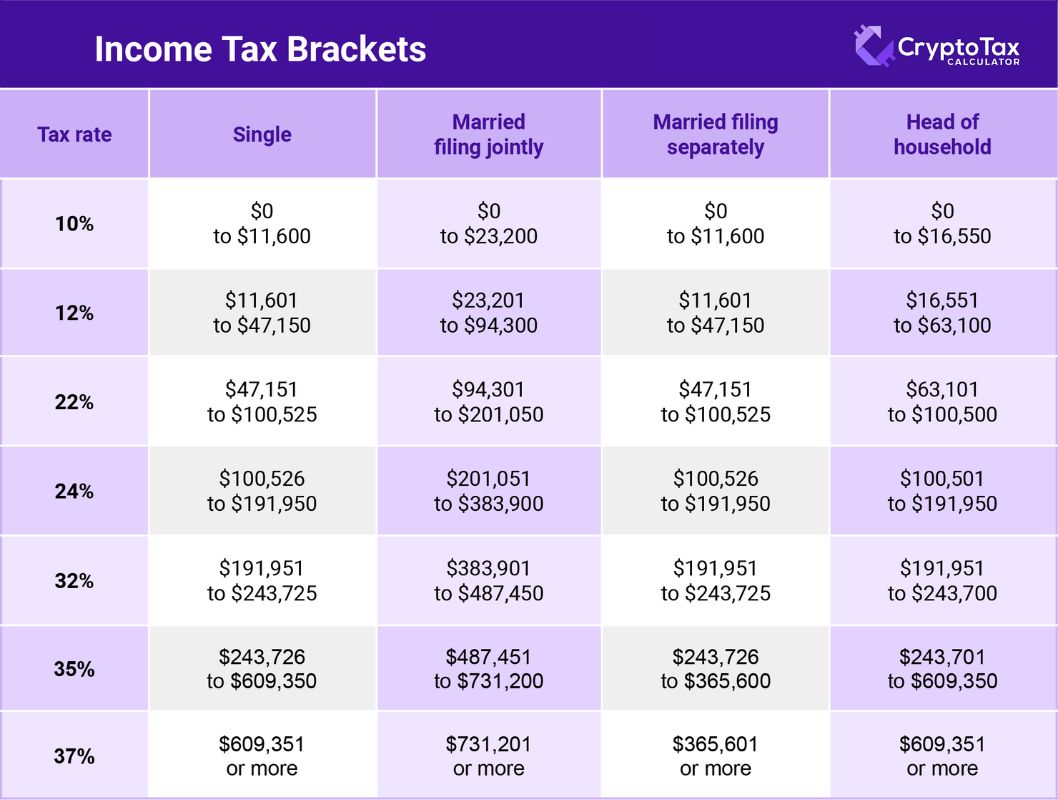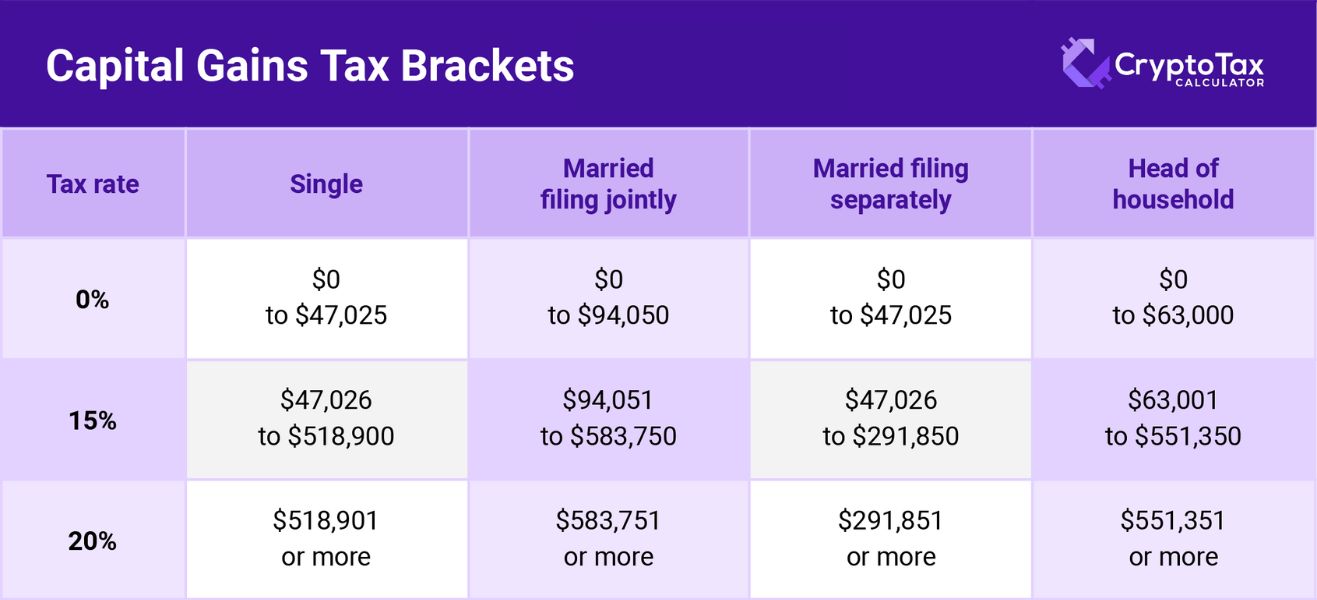Cryptocurrency capital gains refer to the profits you make when you sell, swap, or dispose of your crypto assets for more than you originally paid. Just like with stocks or real estate, these gains are considered taxable events under U.S. tax law.
The IRS treats cryptocurrency as property, not currency. Whenever you dispose of crypto, you may trigger a capital gains tax obligation. Taxable events include selling crypto for USD, swapping one coin for another, or spending crypto on goods or services.
Understanding how to calculate your gains accurately is essential for staying compliant and avoiding penalties.
In this guide, we'll explain step-by-step how to calculate your crypto capital gains, how to establish your cost basis, and compare the various accounting methods (like FIFO, LIFO, Specific ID, and HIFO).
{{how-to-calculate-your-crypto-capital-gains-tax-in-5-steps}}
Gathering your complete transaction history is the first step in calculating your crypto capital gains. This includes all of your transactions any time you:
- Bought crypto
- Sold crypto for fiat
- Swapped one crypto for another
- Spent crypto on goods or services
- Received crypto from staking, airdrops, forks, or other sources
You can typically find your transaction history through:
{{how-to-cgt-cta-1}}
2. Determine your crypto cost basis
Your cost basis is essentially what you paid to acquire the crypto, including:
- The purchase price in USD (or the fair market value at time of acquisition)
- Transaction fees (including gas)
For example, if you bought 1 ETH for $1,500 and paid a $50 fee, your total cost basis would be $1,550.
Cost basis becomes more complicated when dealing with multiple purchases of the same asset at different times and prices. In these cases, the accounting method you use (like FIFO, LIFO, HIFO, or Specific ID) will determine which lot is sold and what cost basis is applied.
The IRS prefers FIFO (First In, First Out), although you can use other methods. If you do, then you’ll need to keep detailed records, and you may want to consult an accountant first to make sure it’s right for you.
Starting in the 2025 tax year (for your 2026 tax report), the IRS will require you to use specific-wallet inventory methods.
While they sound similar, inventory and accounting methods are different, but both affect how you establish your cost basis.
With that in mind, let’s look at how to use FIFO with specific-wallet accounting to calculate your cost basis.
How to establish your cost basis using FIFO and specific-wallet accounting
- Group transactions by wallet or exchange: You must separate your transactions based on where they occurred. Treat each wallet or exchange like its own inventory.
- Establish cost basis for each wallet: Establish the cost basis for each asset in each wallet. If you have moved assets between wallets, you must find the original purchase price.
- Track sales in each wallet: Record each new sale and purchase using FIFO rules to calculate your proceeds and taxable amounts. According to FIFO, the first asset bought is the first one sold of that same type.
Note: Once a tax lot is used up (i.e., a specific asset with a cost basis is sold) it cannot be used again, and the next oldest asset takes its place as the “first asset bought”.
{{how-to-cgt-cta2}}
Establishing your cost basis for airdrops, gifts and staking rewards:
- Airdrops or forks: The cost basis may be the fair market value at the time the asset was received.
- Gifts: If you receive crypto as a gift, you generally inherit the giver’s cost basis.
- Mining or staking: The cost basis is typically the fair market value at the time the reward was received.
3. Calculate your crypto proceeds
Proceeds refer to the amount you received from disposing of your crypto before deducting any fees. This is usually the fair market value (FMV) in USD at the time of sale or exchange.
Example:
- If you sold 1 BTC for $45,000, your proceeds are $45,000.
It's important to capture the FMV accurately at the time of each transaction, as this directly affects your capital gain calculation. You can find the FMV using a reputable exchange like Coinbase.
4. Calculate crypto capital gains or losses
Once you know your cost basis and proceeds, you can calculate your capital gains or losses using this formula:
Capital Gain/Loss = Proceeds – Cost Basis
Let’s take a look at how this works with both a short-term, and a long-term gain, which are each taxed at different rates.
Short-term capital gains tax rates
Cryptocurrency held for 1 year or less before being sold or exchanged is subject to short-term capital gains tax.
These gains are taxed at your ordinary income tax rate, which can range from 10% to 37%, depending on your total taxable income.

Example (Short-term gain):
- Bought 1 BTC at $30,000 in June 2024
- Sold 1 BTC at $40,000 in February 2025
- Gain = $10,000
- Holding period was less than 12 months, so this is a short-term capital gain (taxed at ordinary income rates)
Long-term capital gains tax rates
Cryptocurrency held for more than 1 year qualifies for long-term capital gains tax, which is generally more favorable.
Tax rates for long-term gains are 0%, 15%, or 20%, depending on your taxable income.
Holding cryptocurrency for at least one year before selling or exchanging it can significantly reduce your tax liability.

Example (Long-term gain):
- Bought 5 ETH at $1,000 each in January 2023
- Sold 5 ETH at $2,500 each in February 2025
- Gain = ($12,500 – $5,000) = $7,500
- Holding period was more than 12 months, so this is a long-term capital gain (taxed at preferential long-term rates)
Use losses to offset gains
Remember that your losses can be used to offset gains. If your losses exceed your capital gains, then you can deduct up to $3,000 in net capital losses against your income each year.

5. Report your crypto capital gains on IRS forms
After calculating your gains or losses, you need to report them on your tax return. Specifically:
- Use Form 8949 to report each individual crypto transaction, showing date acquired, date sold, proceeds, cost basis, and resulting gain or loss.

- Totals from Form 8949 are carried over to Schedule D, which summarizes your overall capital gains and losses.

- Report your income from activities like staking, airdrops or yield farming on Schedule 1, line 8z.

Using Crypto Tax Calculator can simplify this process by auto-generating a completed Form 8949 and Schedule D, ready for filing or sharing with your accountant.
{{how-to-cgt-cta-button}}
Accounting Methods: FIFO, LIFO, HIFO, and Specific ID Explained
When calculating crypto capital gains, you must choose an accounting method to determine which units of cryptocurrency you’re selling and at what cost.
This choice affects the taxable gain (or loss) you report to the IRS. The four most common methods are FIFO (First In, First Out), LIFO (Last In, First Out), HIFO (Highest In, First Out), and Specific Identification.
Each method follows a different rule for matching sold crypto with its acquisition cost.
Most investors choose their method when preparing their tax report. Once you choose a method, you must apply it consistently across all transactions for that tax year.
When calculating your gains, the accounting method you choose determines which unit of crypto you are considered to have sold. The four most common methods are:
FIFO (First In, First Out)
Assumes the oldest crypto you bought is sold first.
Example:
- Bought 1 BTC at $10,000 on April 15, 2020 and another at $15,000 on September 2022.
- Sold 1 BTC at $20,000 on March 1st, 2025.
- Under FIFO, assumes you sold the April 15 BTC for a gain of $10,000.
LIFO (Last In, First Out)
Assumes the newest crypto you bought is sold first.
Example:
- Using the same scenario above, under LIFO the September BTC is sold first, resulting in a gain of $5,000.
HIFO (Highest In, First Out)
Prioritizes selling the crypto with the highest cost basis to minimize tax.
Example:
- If you had three BTC purchased at $10K, $18K, and $15K, and sold one at $20K, HIFO selects the $18K BTC, resulting in a $2K gain.
Specific ID
Allows you to choose the exact units of crypto to sell, provided you have sufficient documentation. This method can be highly tax-efficient when used strategically.
Example:
- You hold three ETH purchased at $1,000, $1,500, and $2,000. You sell one ETH and select the $2,000 unit under Specific ID, minimizing your gain.
Pros and Cons:
- FIFO is IRS-friendly and easy to apply. The IRS typically prefers this method.
- LIFO and HIFO can reduce your short-term gains but require detailed records.
- Specific ID offers the greatest flexibility and potential tax savings but demands precise tracking and documentation.
- LIFO, HIFO and Specific ID all require flawless record keeping. If the IRS disagrees with your calculations, you may be forced to redo them using FIFO.
Crypto Tax Calculator supports multiple methods, helping you compare outcomes and choose the most tax-efficient option.
Capital gains tax events in crypto
Anytime that you dispose of a cryptocurrency, either at a profit or loss, a capital gains event is triggered.

- Crypto-to-crypto trades: Swapping one crypto for another is a taxable event. You must calculate the FMV of the asset received in USD and use that as the proceeds.
- Selling crypto for USD (fiat): When you sell cryptocurrency for fiat currency (eg, USD), you must report any capital gain or loss resulting from the sale.
- NFTs: NFTs are subject to capital gains when sold.
- Stablecoins: Despite their name, stablecoins experience slight fluctuations in value, and you must report any capital gains or losses however minor.
- Staking rewards and airdrops: Staking rewards and airdrops are treated as ordinary income when received, with that value becoming your cost basis for future disposal.
- Depositing into liquidity pools: When you interact with DeFi protocols, you often exchange one cryptocurrency for another or for a token representing your stake, which the IRS may consider a taxable event.
Considerations when calculating your crypto capital gains tax
Record-keeping: Keep detailed records of every crypto transaction: dates, values, and purposes. This is essential for accurate reporting and defending your return if audited.
Penalties for incorrect reporting: Failure to report crypto gains accurately can result in penalties, interest, or even audits. The IRS has increased scrutiny of crypto holdings and requires a Yes/No question on your 1040 about digital assets.
Use of crypto tax software: Manual calculation is time-consuming and error-prone. Crypto Tax Calculator can:
- Aggregate transactions from 3500+ exchanges, wallets, and DeFi platforms
- Automatically apply accounting and inventory methods to help ensure an accurate cost basis.
- Generate IRS-ready tax forms to make filing a breeze
- Save you time and help reduce your risk of an audit
Sources
The information provided on this website is general in nature and is not tax, accounting or legal advice. It has been prepared without taking into account your objectives, financial situation or needs. Before acting on this information, you should consider the appropriateness of the information having regard to your own objectives, financial situation and needs and seek professional advice. Crypto Tax Calculator disclaims all and any guarantees, undertakings and warranties, expressed or implied, and is not liable for any loss or damage whatsoever (including human or computer error, negligent or otherwise, or incidental or Consequential Loss or damage) arising out of, or in connection with, any use or reliance on the information or advice in this website. The user must accept sole responsibility associated with the use of the material on this site, irrespective of the purpose for which such use or results are applied. The information in this website is no substitute for specialist advice.

























































































































































































